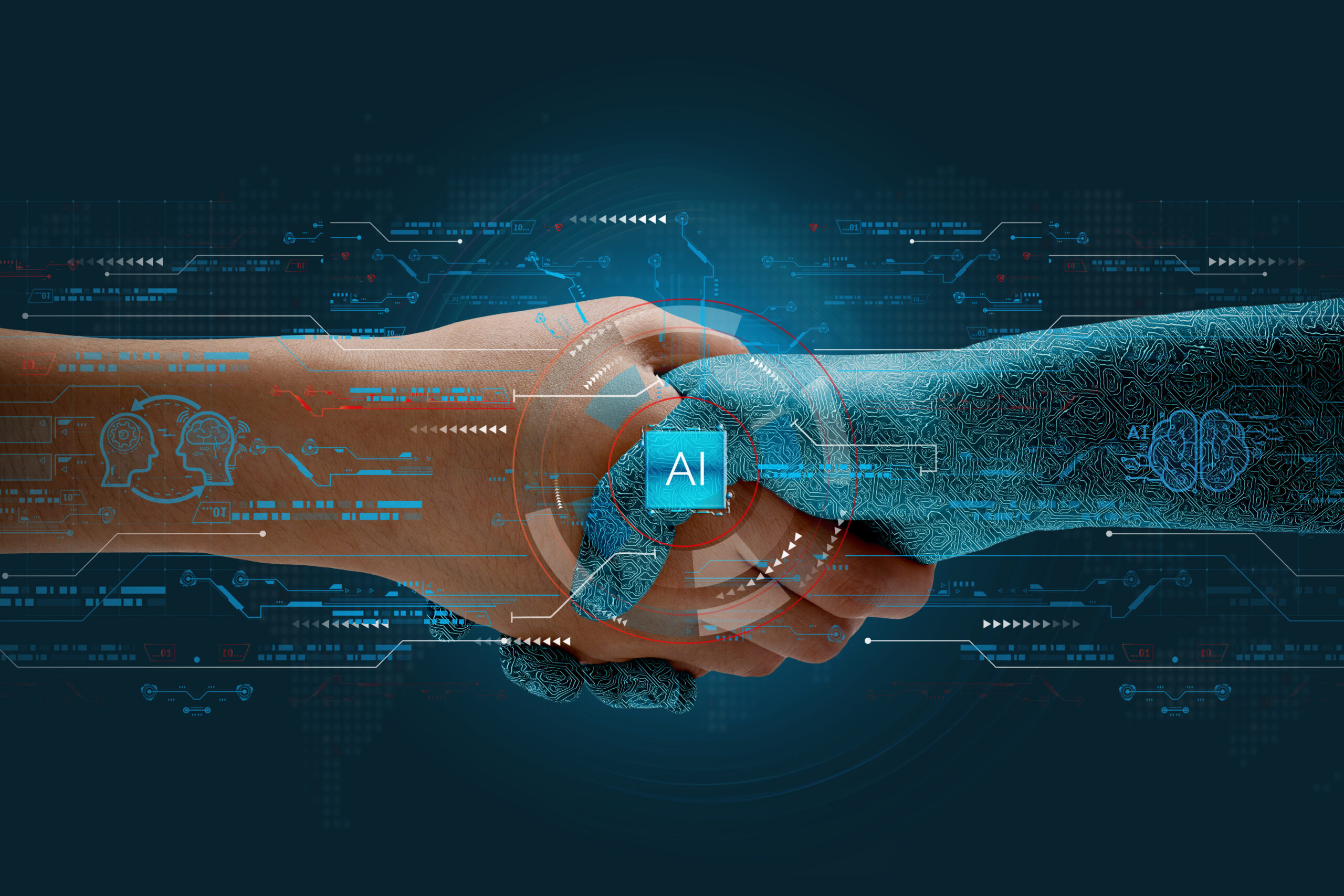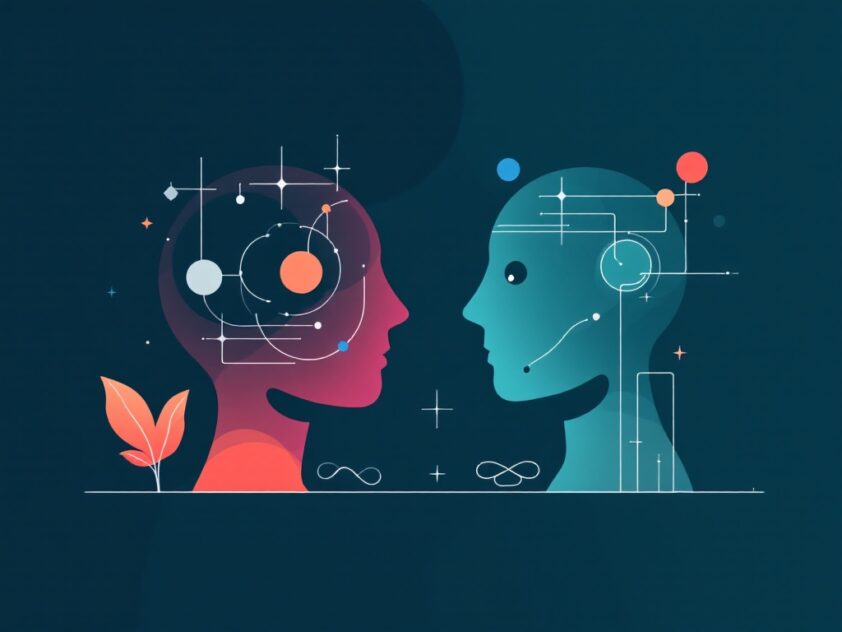Picture a marketing team where human creativity dances with artificial intelligence’s analytical precision. This isn’t science fiction – it’s the reality of modern marketing through hybrid intelligence, where human intuition and AI capabilities combine to create something greater than the sum of their parts.
The marriage of human expertise and AI technology is changing how brands connect with their audiences. According to industry experts, this collaboration enables marketers to enhance customer experiences through personalized interactions while maintaining the authentic human touch that builds lasting relationships.
AI excels at analyzing vast amounts of customer data, automating routine tasks, and identifying patterns that would take humans weeks to uncover. Meanwhile, human marketers bring irreplaceable creativity, emotional intelligence, and strategic thinking that AI simply cannot replicate. Together, they’re transforming everything from campaign management to content creation.
Yet this powerful partnership isn’t without its challenges. Organizations must balance automation with human oversight, ensure data privacy and ethical use of AI, and help marketing teams develop new skills. Success requires rethinking traditional workflows and fostering a culture where humans and AI complement rather than compete with each other.
Exploring the intersection of human ingenuity and artificial intelligence in marketing reveals how forward-thinking brands harness this synergy to deliver more relevant, engaging, and effective marketing campaigns while maintaining authentic connections with their audiences.
The Role of AI in Enhancing Customer Experience
Artificial intelligence has transformed how businesses connect with their customers. AI’s ability to process massive amounts of customer data allows companies to create highly personalized experiences tailored to each individual.
AI personalization engines analyze everything from past purchases to browsing habits, helping businesses understand what their customers want. For example, when you shop on Amazon, AI studies your behavior to suggest products you’re likely to love. Their recommendation system drives up to 35% of their sales through personalized suggestions.
Customer engagement platforms powered by AI have revolutionized how businesses handle support. AI chatbots provide instant, 24/7 assistance while learning from each interaction to become more helpful over time. Research shows that 71% of consumers now expect companies to deliver personalized interactions, making AI-driven support essential for meeting customer expectations.
Beyond recommendations and support, AI helps create marketing campaigns that resonate with customers. Instead of sending generic promotional emails, businesses can use AI to craft messages that reference specific interests and past interactions with their brand. This personal touch makes customers feel valued and understood, leading to stronger relationships and loyalty.
AI impacts customer experience even deeper with predictive analytics. By studying patterns in customer behavior, AI can anticipate what a customer might need before they even ask. Think about how Netflix suggests shows you might enjoy or how Spotify creates custom playlists – that’s AI working behind the scenes to enhance your experience.
One of the most exciting developments is how AI helps create seamless experiences across all customer touchpoints. Whether you’re shopping on a website, using a mobile app, or visiting a physical store, AI ensures that your preferences and history follow you, creating a consistent and personalized journey every step of the way.
The magic of AI lies in its ability to turn mountains of data into meaningful, personalized experiences that make customers feel truly understood and valued.
Eva Miller, VP of Marketing at Digital Silk
Challenges of Integrating AI in Marketing
The rapid advancement of artificial intelligence in marketing has opened new frontiers for personalization and efficiency, but it also brings significant challenges that businesses must carefully navigate. According to Forbes, AI tools can now access and analyze customer data in ways many consumers aren’t even aware of, raising critical concerns about privacy and ethical use.
Data Privacy Concerns
One of the most pressing challenges is maintaining robust data privacy while leveraging AI’s analytical capabilities. Organizations must balance the power of AI-driven insights with the responsibility to protect sensitive customer information. This includes implementing strict data governance policies and ensuring compliance with regulations like GDPR and CCPA.
The stakes are high as data breaches can result in substantial financial penalties and severe damage to brand reputation. Companies must invest in robust encryption methods, regular security audits, and comprehensive data protection protocols to safeguard customer information.
Implementing role-based access controls and maintaining transparent data collection practices have become non-negotiable requirements. Companies need to clearly communicate how customer data is being used and obtain explicit consent before any AI-powered analysis begins.
76% of consumers express serious concerns about misinformation from artificial intelligence tools, highlighting the critical need for transparent data practices.
Forbes Advisor Survey
Organizations must also establish clear protocols for data retention and deletion, ensuring that customer information isn’t stored longer than necessary and that consumers maintain control over their personal data.
Ethical Considerations
The ethical implications of AI in marketing extend beyond simple data protection. Algorithmic bias represents a significant challenge, potentially leading to discriminatory practices in targeted marketing campaigns. Companies must actively work to identify and eliminate these biases to ensure fair treatment of all customer segments.
Transparency in AI-driven decision-making has become increasingly important. Marketers must be able to explain how their AI systems make recommendations and ensure that automated decisions can be reviewed and adjusted when necessary.
The challenge of maintaining human oversight while leveraging AI capabilities requires careful balance. Organizations need to establish clear guidelines for when human intervention is necessary and ensure that AI systems complement rather than replace human judgment.
AI-driven marketing strategies must prioritize transparency to the consumer by ensuring they are clearly informed about how their personal data is being used and obtain consent before any data is collected.
Silverback Strategies
Companies must also consider the societal impact of their AI marketing practices, ensuring they don’t exploit vulnerable populations or perpetuate harmful stereotypes.
Continuous Monitoring and Improvement
Maintaining effective AI marketing systems requires ongoing vigilance and adaptation. Regular audits of AI performance and impact are essential to identify potential issues before they become significant problems.
Organizations need to establish feedback loops that allow for quick identification and correction of any AI-related issues. This includes monitoring for unintended consequences of automated marketing decisions and adjusting algorithms accordingly.
The rapid evolution of AI technology means that companies must continuously update their systems and practices to maintain effectiveness while ensuring compliance with emerging regulations and ethical standards.
Investment in employee training and development is crucial, as team members need to understand both the capabilities and limitations of AI tools to use them effectively and responsibly.
Success in AI marketing requires a commitment to continuous improvement, with regular assessments of both technical performance and ethical compliance driving ongoing refinements to systems and processes.
| Aspect | GDPR | CCPA |
|---|---|---|
| Effective Date | May 25, 2018 | January 1, 2020 |
| Scope | Applies to businesses processing personal data of individuals in the EU, regardless of business location | Applies to for-profit businesses collecting personal data from California residents, meeting certain thresholds |
| Personal Data Definition | Any information relating to an identifiable person | Information that identifies, relates to, describes, or can be linked to a particular consumer or household |
| Data Subject Rights | Access, rectification, erasure, restriction, data portability, objection | Access, deletion, opt-out of sale, non-discrimination |
| Consent | Explicit opt-in consent required | Opt-out consent for the sale of personal data |
| Enforcement | National data protection authorities, fines up to €20 million or 4% of global annual revenue | California Attorney General, fines up to $7,500 per violation |
Human Creativity and AI’s Analytical Power
The synergy between human creativity and artificial intelligence is reshaping how businesses approach strategic decision-making. While AI excels at processing vast amounts of data with remarkable speed and precision, human judgment remains essential for interpreting insights and making nuanced strategic choices. According to Product School research, organizations leveraging AI have seen productivity increases of up to 40% in certain functions by automating routine tasks.
AI handles time-consuming activities like data entry, customer segmentation, and performance analytics. This automation allows marketing professionals to focus their creative energies on developing compelling brand narratives, understanding subtle consumer psychology, and crafting innovative campaign strategies. The power lies not in replacing human marketers, but in augmenting their capabilities with AI’s analytical strengths.
Consider content creation, where AI tools now assist in analyzing engagement patterns and optimizing delivery times. However, the core creative work – developing unique brand voices, emotional storytelling, and understanding cultural nuances – remains distinctly human. This division of labor plays to each partner’s strengths: AI’s data processing capabilities and humans’ emotional intelligence.
The impact extends beyond just efficiency gains. When properly integrated, AI frees marketing teams from mundane tasks that once consumed hours of their workday. A marketing strategist no longer needs to spend days crunching numbers to identify trends – AI can surface these insights instantly, allowing more time for creative ideation and strategic planning.
However, maximizing this partnership requires careful consideration of when to rely on AI versus human judgment. For example, while AI excels at identifying patterns in consumer behavior data, humans are better equipped to understand the contextual factors and emotional drivers behind those patterns. The most successful organizations have learned to blend these complementary strengths, using AI’s analytical power to inform and enhance human creativity rather than replace it.
The future of marketing lies not in choosing between human creativity and AI analytical power, but in learning how to combine them effectively for maximum impact.
Abhishek Gandotra, Strategic Decision-Making Expert
Moving forward, the key to success will increasingly depend on finding the right balance between artificial and human intelligence. Organizations that master this integration will gain a significant competitive advantage, able to make data-driven decisions while maintaining the creative spark that drives true innovation in marketing.
Best Practices for Human-AI Collaboration
Successful human-AI collaboration requires a thoughtful approach that leverages the unique strengths of both human workers and artificial intelligence systems. Recent research from Harvard Business Review’s study of 1,500 companies demonstrates that the most significant performance improvements occur when humans and AI work together synergistically rather than in isolation.
At the core of effective collaboration lies the principle of complementary capabilities. AI excels at processing vast amounts of data, identifying patterns, and performing repetitive tasks with consistent accuracy. Humans bring creativity, emotional intelligence, and nuanced judgment to the table. Organizations must strategically assign responsibilities based on these inherent strengths.
Clear Role Definition and Boundaries
Establishing clear boundaries between human and AI responsibilities is fundamental. For instance, while AI can efficiently analyze customer data patterns, humans should make final decisions about complex customer relationship strategies. This delineation helps prevent confusion and ensures each contributor focuses on their areas of expertise.
Training and upskilling teams to work alongside AI is equally crucial. Employees need to understand how AI systems make decisions, their limitations, and when human intervention is necessary. This knowledge enables more effective collaboration and builds trust in the partnership.
Organizations must also implement robust feedback mechanisms where humans can validate and refine AI outputs. Regular reviews of AI recommendations help catch potential biases and ensure decisions align with business goals and ethical considerations.
Maintaining Human Agency and Oversight
Maintaining appropriate levels of human oversight is critical. According to research published in SAGE Journals, successful organizations follow six key principles: addition, relevance, substitution, diversity, collaboration, and explanation. These principles ensure that AI augments rather than replaces human capabilities.
Leaders should establish clear protocols for when and how AI decisions require human review. This is particularly important in high-stakes situations where errors could have significant consequences. Creating checkpoint systems helps maintain accountability while leveraging AI’s efficiency.
Regular evaluation of collaboration outcomes helps identify areas for improvement. Teams should track both quantitative metrics, like processing time and accuracy rates, and qualitative factors such as employee satisfaction and comfort levels with AI tools.
Fostering a Collaborative Culture
Creating a culture that embraces human-AI collaboration is essential for long-term success. Organizations should encourage open dialogue about AI integration challenges and successes. This transparency helps address concerns and builds trust in the collaborative approach.
Teams need to feel empowered to question AI outputs when they seem incorrect or problematic. Establishing clear channels for raising concerns and suggesting improvements helps maintain a healthy balance between automation and human judgment.
Celebrating successes where human-AI collaboration leads to better outcomes reinforces the value of this partnership. Sharing case studies and positive results helps build confidence in the collaborative model and encourages broader adoption across the organization.
Leveraging SmythOS for Human-AI Collaboration

SmythOS stands at the forefront of innovation in hybrid intelligence, offering a groundbreaking platform where human expertise and AI capabilities converge seamlessly. This system transforms how businesses approach AI integration, making sophisticated technology accessible without requiring extensive technical knowledge.
SmythOS excels in facilitating universal integration across business operations. The platform unifies disparate tools, data sources, and processes into a cohesive digital ecosystem, streamlining workflows and enabling holistic access to organizational resources. This integration allows businesses to connect their existing systems with AI tools effortlessly, maximizing efficiency and productivity.
The platform’s robust monitoring capabilities set it apart in AI orchestration. Through real-time tracking and analysis, SmythOS provides unprecedented visibility into AI agent performance, ensuring optimal operation and rapid problem resolution. This monitoring framework allows organizations to maintain control while leveraging the full potential of autonomous AI systems.
Most importantly, SmythOS democratizes access to advanced AI capabilities. Its intuitive no-code interface enables team members across different departments to create and deploy AI solutions without extensive programming knowledge. This democratization empowers employees to become active participants in the AI transformation journey, fostering innovation throughout the organization.
The platform’s adaptive learning capabilities ensure that AI systems evolve alongside your business needs. As your organization grows and changes, SmythOS adjusts its operations accordingly, maintaining peak performance and relevance. This flexibility ensures long-term value and sustained competitive advantage in a changing business landscape.
SmythOS transforms isolated AI tools into a cohesive network, automating complex workflows across every area of business. This synergy amplifies results, making AI not just a tool but a strategic partner.
Alexander De Ridder, Co-Founder and CTO of SmythOS
The security framework built into SmythOS provides peace of mind for organizations implementing AI solutions. Through constrained alignment and robust security controls, businesses can confidently deploy AI agents while maintaining data protection and operational integrity. This security-first approach ensures that innovation doesn’t come at the cost of safety and compliance.
Conclusion and Future of Human-AI Marketing

The marketing landscape stands at a pivotal moment where artificial intelligence and human creativity converge to create unprecedented opportunities. The successful integration of these two forces has already demonstrated remarkable results in delivering more personalized, efficient, and data-driven marketing strategies while maintaining authentic human connections.
The collaboration between human marketers and AI tools has proven particularly powerful in areas like data analysis, audience segmentation, and campaign optimization. As research shows, this hybrid intelligence approach brings significant advantages to the marketing domain by combining human intuition with AI’s computational capabilities.
Looking ahead, the evolution of AI technology will undoubtedly expand the possibilities for marketing innovation. However, the human element remains irreplaceable. While AI excels at processing vast amounts of data and automating routine tasks, human creativity, emotional intelligence, and strategic thinking continue to be vital for crafting messages that truly resonate with audiences.
The future success of marketing initiatives will increasingly depend on finding the optimal balance between AI capabilities and human ingenuity. Organizations that can effectively blend data-driven insights with creative storytelling, emotional depth, and cultural understanding will be best positioned to thrive in this new era of marketing.
As we move forward, the focus should not be on choosing between AI or human creativity, but rather on fostering a symbiotic relationship where each enhances the other’s strengths. This balanced approach will enable marketers to create more meaningful connections with their audiences while leveraging the efficiency and scalability that AI provides.
